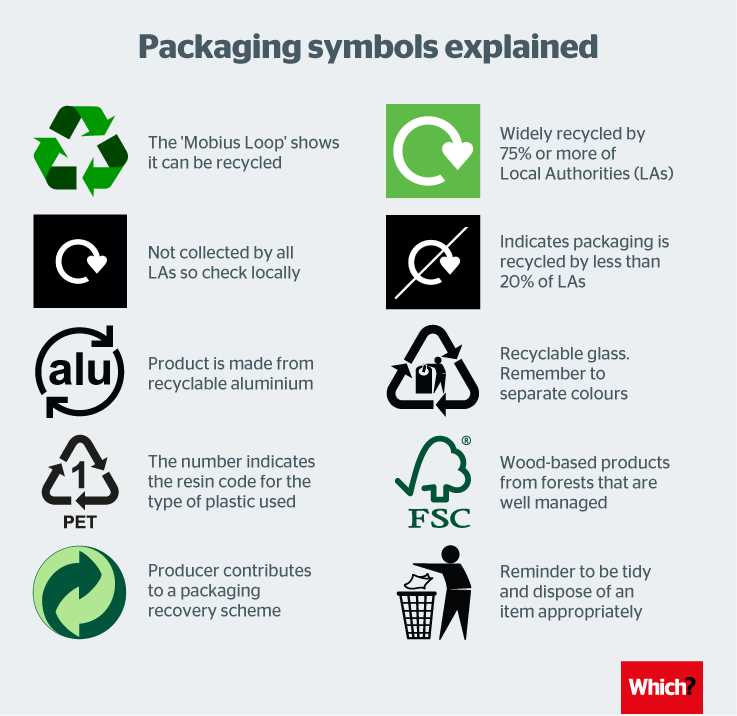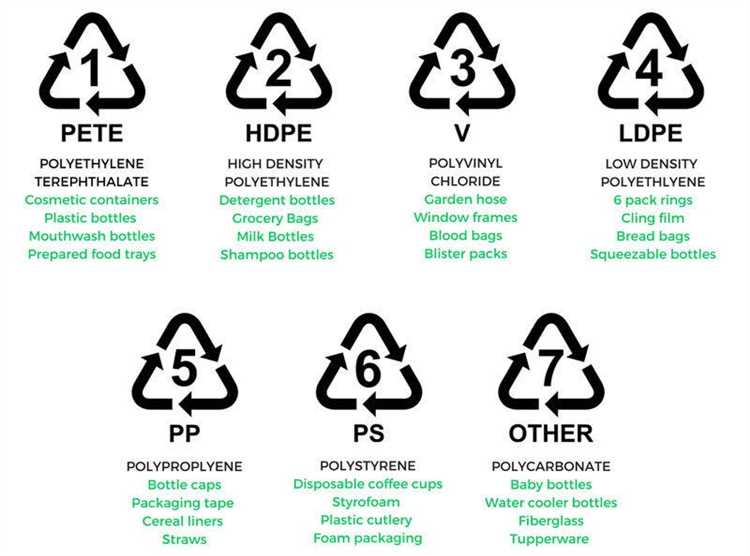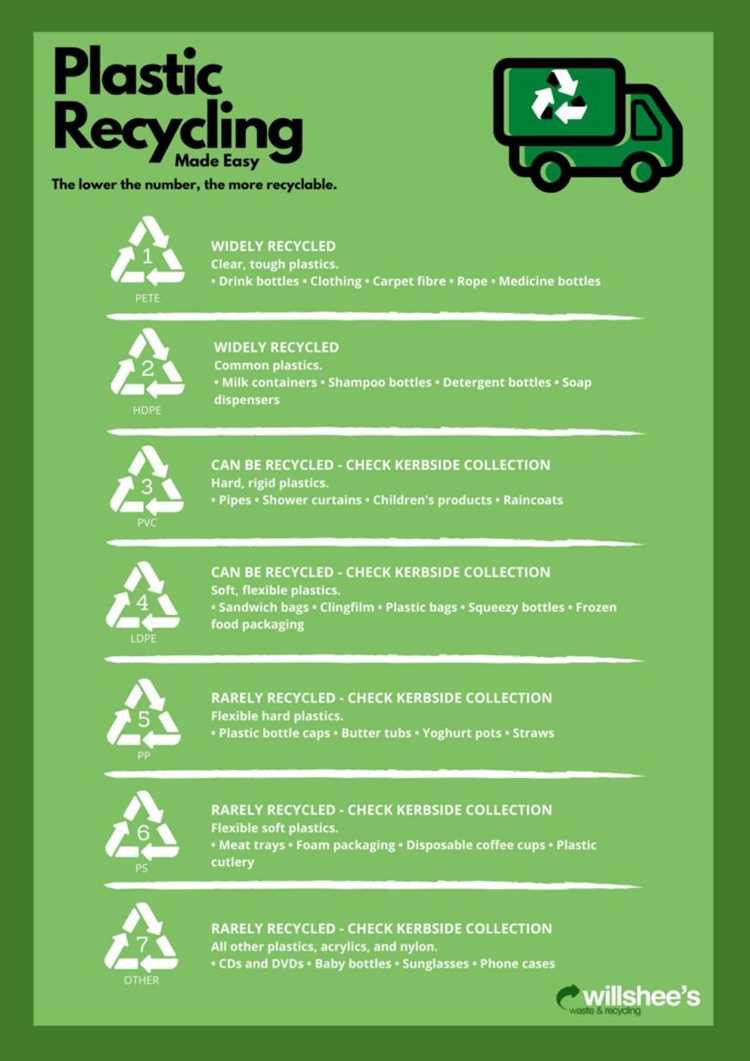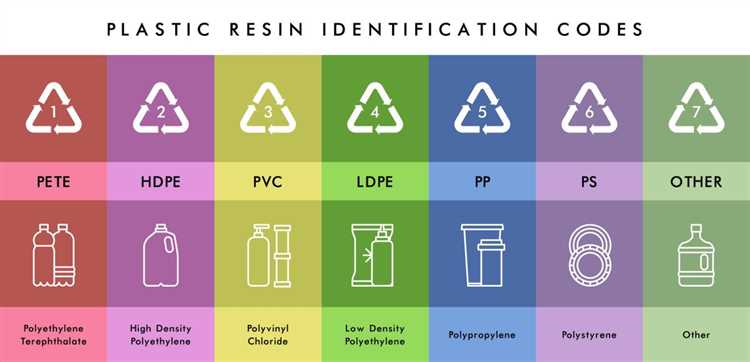In today’s world, where environmental concerns are becoming increasingly important, recycling has become a vital part of our daily lives. One of the most common sources of waste is plastic, and determining whether it is recyclable or not can be a challenging task. Understanding the different types of plastic and their recycling codes is essential for making informed decisions and contributing to a more sustainable future.
Firstly, it is important to know that not all plastics are created equal when it comes to recycling. Different types of plastic have varying properties and recycling capabilities. The easiest way to determine if a plastic item is recyclable is to look for the recycling symbol on the packaging. The symbol consists of three chasing arrows, forming a triangle, with a number in the center. This number is known as the recycling code and indicates the type of plastic used.
Secondly, familiarize yourself with the seven different types of plastic and their recycling codes:
- PETE (Polyethylene Terephthalate) – Recycling code #1
- HDPE (High-Density Polyethylene) – Recycling code #2
- V (Polyvinyl Chloride) – Recycling code #3
- LDPE (Low-Density Polyethylene) – Recycling code #4
- PP (Polypropylene) – Recycling code #5
- PS (Polystyrene) – Recycling code #6
- Other – Recycling code #7
Thirdly, once you have identified the plastic type using the recycling code, check with your local recycling center or waste management company to determine if they accept that specific type of plastic. Some recycling programs may only accept certain types of plastic, so it is crucial to verify their guidelines to ensure your efforts are not in vain.
In conclusion, being aware of the different types of plastics and their recyclability is key to making sustainable choices. By looking for the recycling symbol, understanding the recycling codes, and checking with your local recycling center, you can play an active role in minimizing plastic waste and protecting the environment.
- What is recycling?
- Why is recycling important?
- How to determine if plastic is recyclable?
- Check labeling
- Look for recycling symbols
- Commonly recyclable plastics:
- Not commonly recyclable plastics:
- Q&A:
- Why is it important to determine if plastic is recyclable?
- How can I determine if a plastic item is recyclable?
- What do the numbers inside the recycling symbol mean?
- Are all types of plastic recyclable?
- What should I do if a plastic item is not recyclable?
What is recycling?
Recycling is the process of converting waste materials into reusable materials. It involves collecting and processing materials that would otherwise be thrown away as trash or end up in landfills. The aim of recycling is to reduce waste and conserve natural resources, such as energy, water, and raw materials.
Through recycling, the materials from used products are transformed into new products, reducing the need for virgin materials and minimizing the environmental impact of manufacturing. Recycling plays a crucial role in sustainable waste management practices.
There are different types of recycling, including:
| 1. Paper recycling: | Collecting and processing paper waste to create new paper products. |
| 2. Plastic recycling: | Collecting and processing plastic waste to create new plastic products. |
| 3. Glass recycling: | Collecting and processing glass waste to create new glass products. |
| 4. Metal recycling: | Collecting and processing metal waste to create new metal products. |
| 5. Electronic waste recycling: | Collecting and processing electronic waste to recover valuable materials. |
Recycling has numerous benefits, including reducing the consumption of raw materials, saving energy, reducing pollution, and decreasing greenhouse gas emissions. By recycling, individuals and communities can contribute to the preservation of the environment and the creation of a sustainable future.
Why is recycling important?
Recycling plays a crucial role in protecting our environment and conserving natural resources.
One of the main reasons recycling is important is because it helps reduce the amount of waste that ends up in landfills. When we recycle, we divert materials from the waste stream, which helps to minimize pollution and greenhouse gas emissions associated with waste disposal.
In addition, recycling helps conserve valuable resources. Many products are made using raw materials that are extracted from the earth, such as oil, metal ores, and trees. By recycling, we can reduce the need for extracting and processing these materials, which in turn saves energy and reduces the negative impacts of resource extraction.
Another important benefit of recycling is that it helps create jobs and stimulate economic growth. The recycling industry employs millions of people worldwide, and by supporting recycling programs, we can contribute to the economy while also protecting the environment.
Furthermore, recycling helps to preserve natural habitats and ecosystems. Extracting raw materials often requires the destruction of forests and other natural areas, leading to the loss of biodiversity and ecosystem services. By recycling, we can reduce the demand for new materials and help protect habitats for future generations.
Overall, recycling is a simple yet effective way to make a positive impact on the environment and create a more sustainable future. By recycling and choosing products made from recycled materials, we can help conserve resources, reduce pollution, and protect our planet for generations to come.
How to determine if plastic is recyclable?

Recycling has become an essential part of sustainable living, and determining if plastic is recyclable is an important step in the process. Here are some tips to help you identify if plastic can be recycled:
- Check for recycling symbols: Look for the recycling symbols on the plastic packaging. These symbols consist of three arrows forming a triangle, with a number inside. The numbers range from 1 to 7 and indicate the type of plastic. Some recycling facilities only accept specific types of plastic, so make sure to check if the symbol matches their requirements.
- Research local recycling guidelines: Different recycling facilities and programs have varying guidelines, so it’s important to research your local recycling rules. Some areas have specific instructions on what types of plastic they accept, while others may have restrictions on certain plastics. Visit your local recycling facility’s website or contact them directly to get accurate information.
- Look for recyclable plastic types: Generally, plastics with numbers 1 (PETE or PET), 2 (HDPE), and 5 (PP) are widely accepted for recycling. These plastics are commonly used for water bottles, milk jugs, and yogurt containers. However, it’s essential to follow local guidelines as some facilities may only accept certain types of plastics.
- Avoid non-recyclable plastics: Plastics with numbers 3 (PVC), 4 (LDPE), 6 (PS), and 7 (other plastics) are often challenging to recycle and may not be accepted in recycling programs. These plastics are commonly used for food packaging, plastic film, and disposable cutlery. If you have items made from these plastics, consider finding alternative ways to reuse or dispose of them properly.
Remember that proper recycling practices are crucial for protecting the environment, conserving resources, and reducing waste. By following these tips, you can make informed decisions about recycling plastic and contribute to a more sustainable future.
Check labeling
One of the easiest ways to determine if plastic is recyclable is to check its labeling. Look for a triangle symbol made up of three arrows in a chasing arrow pattern. This symbol is called the recycling symbol and it indicates that the item is recyclable. The number inside the symbol represents the type of plastic used to make the item.
Not all plastics are created equal when it comes to recyclability. Some common plastic types that are recyclable include:
- PETE or PET (Polyethylene Terephthalate) – used for beverage bottles and food containers
- HDPE (High-Density Polyethylene) – used for milk jugs, detergent bottles, and plastic bags
- PVC (Polyvinyl Chloride) – used for pipes, vinyl flooring, and blister packaging
- LDPE (Low-Density Polyethylene) – used for plastic bags, squeeze bottles, and clothing
- PP (Polypropylene) – used for yogurt containers, bottle caps, and food containers
Keep in mind that just because a plastic is labeled as recyclable, it doesn’t necessarily mean that your local recycling facility accepts it. Check with your local recycling guidelines to ensure that you can recycle the specific plastic in your area.
Additionally, some plastics may have specific labeling for special recycling programs. For example, the symbol PLA (Polylactic Acid) is used for biodegradable plastics that require industrial composting facilities.
When checking the labeling, it’s also important to look for any additional recycling instructions or markings. These may include instructions to rinse the plastic before recycling or to remove any non-recyclable parts, such as caps or labels.
Look for recycling symbols

When trying to determine if plastic is recyclable, one of the easiest ways is to look for recycling symbols. These symbols are typically found on the bottom or side of plastic items and are used to indicate the type of plastic used and whether it can be recycled.
One commonly found symbol is the recycling triangle, also known as the chasing arrows symbol. Inside the triangle, there is a number ranging from 1 to 7, which identifies the type of plastic used. This number, known as the resin identification code, helps recycling facilities sort and process different types of plastic.
Commonly recyclable plastics:

- Plastics with the recycling symbol #1, PETE or PET, which are commonly used for soda bottles and food packaging.
- Plastics with the recycling symbol #2, HDPE, which are commonly used for milk jugs, detergent bottles, and plastic bags.
- Plastics with the recycling symbol #5, PP, which are commonly used for yogurt containers, drinking straws, and medicine bottles.
Not commonly recyclable plastics:

- Plastics with the recycling symbol #3, PVC, which are commonly used for pipes, shower curtains, and vinyl flooring. PVC is generally not accepted in curbside recycling programs.
- Plastics with the recycling symbol #6, PS, which are commonly used for foam packaging, disposable plates, and cups. PS is not accepted in curbside recycling in many areas, but some specialized facilities may accept it.
- Plastics with the recycling symbol #7, other or mixed plastics, which are often a combination of different types of plastic. These plastics are not commonly recyclable and are best to avoid whenever possible.
Remember, not all plastics are created equal in terms of recyclability. Always check for recycling symbols and consult your local recycling guidelines to ensure proper disposal of plastic items.
Q&A:
Why is it important to determine if plastic is recyclable?
It is important to determine if plastic is recyclable because not all types of plastic can be recycled. If non-recyclable plastic is placed in recycling bins, it can contaminate the recycling process and potentially lead to the rejection of the entire batch.
How can I determine if a plastic item is recyclable?
To determine if a plastic item is recyclable, you should look for the recycling symbol on the packaging. The recycling symbol consists of three chasing arrows forming a triangle, often accompanied by a number inside. This number represents the type of plastic and indicates whether it can be recycled.
What do the numbers inside the recycling symbol mean?
The numbers inside the recycling symbol on plastic items indicate the type of plastic used to make the item. These numbers range from 1 to 7 and each number corresponds to a specific type of plastic. Some types, such as #1 PETE and #2 HDPE, are commonly accepted for recycling, while others may not be recyclable in certain areas.
Are all types of plastic recyclable?
No, not all types of plastic are recyclable. While many types, such as PETE (#1) and HDPE (#2), are widely accepted for recycling, others may not be accepted in certain recycling programs or facilities. It is important to check with your local recycling guidelines to determine which types of plastic are accepted in your area.
What should I do if a plastic item is not recyclable?
If a plastic item is not recyclable, it should be disposed of properly in the regular trash. It is important not to place non-recyclable plastics in recycling bins as they can contaminate the recycling process. Additionally, consider reducing your consumption of single-use plastics and opting for reusable alternatives whenever possible.